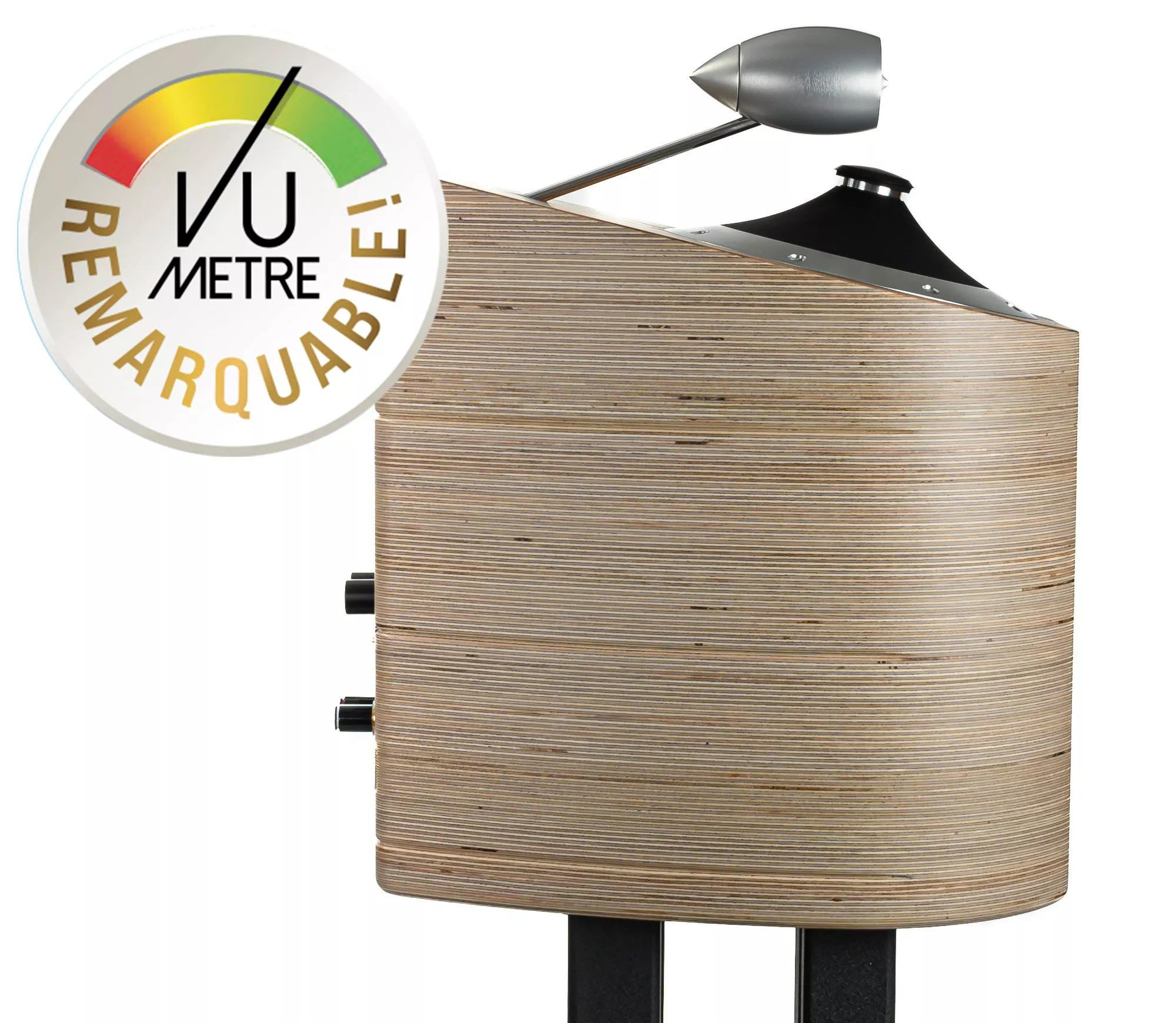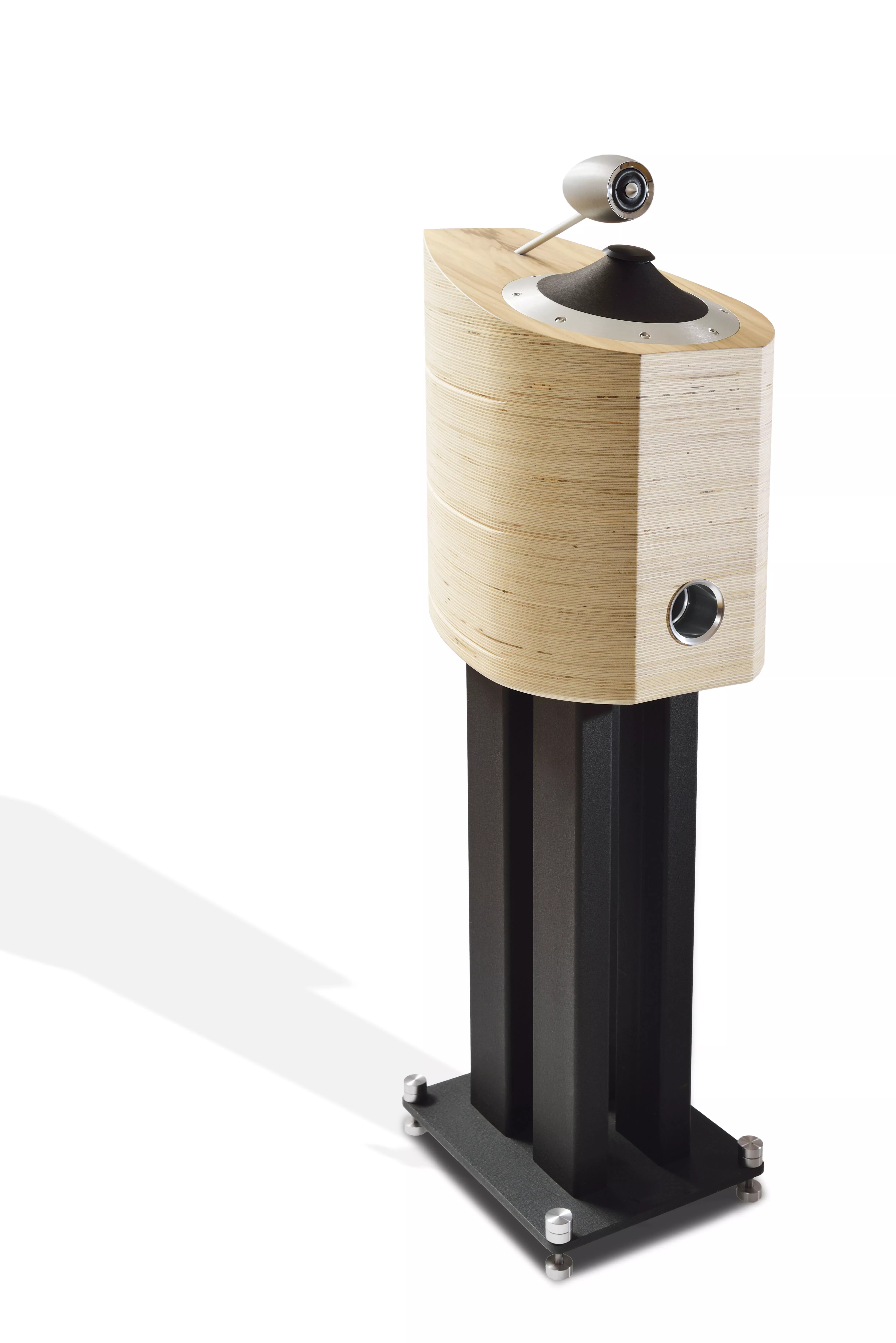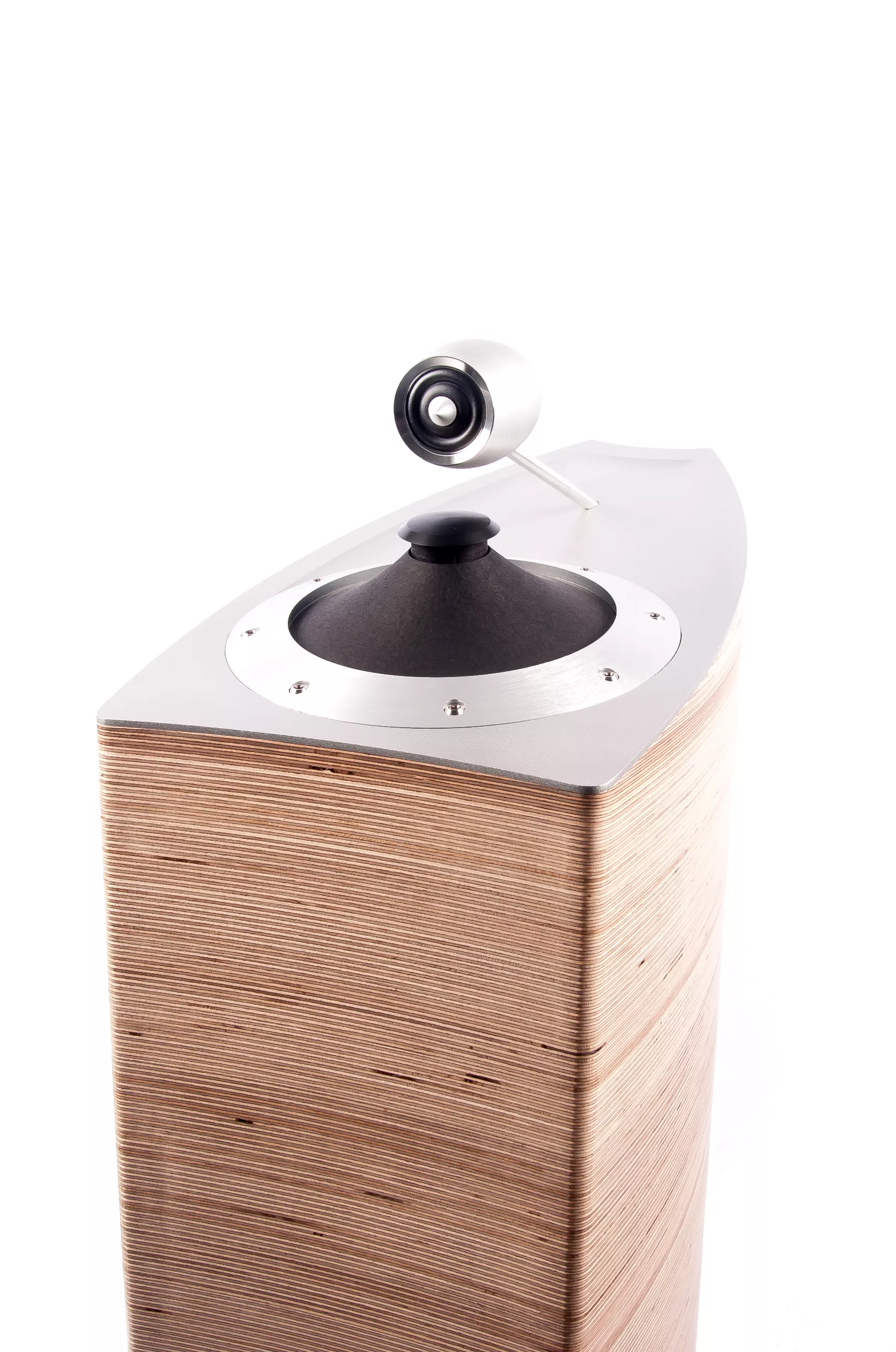Last year around this time, we were testing a floor-standing speaker crafted from marine-grade plywood, featuring an innovative driver without a surround or spider. The LEMS (Linear Excursion Motor System) is a 20 cm full-range driver equipped with two concentric voice coils: one to move the cone and the other acting as an "electromagnetic suspension."
DIAPASON 2024

This impressive driver covers a linear frequency range from 35 Hz to 9.5 kHz, where a soft-dome silk tweeter takes over, merging seamlessly with the LEMS up to 22 kHz.
The LEMS is the result of eight years of development by brothers Tom and Jef Nuyts, pursuing their dream of creating a full-range speaker driver free from mechanical constraints—essentially, "free as air." Perfected in the Magister MkII floor-standing speaker (winner of a Diapason d'Or, issue no. 718), the LEMS is now integrated into a more compact bookshelf model, the Vocalis MkII NE. Only minor differences are evident, such as the cuts of wooden segments and the calculated placement of the two drivers for optimal spatial coverage and minimal directivity. The electromagnetic suspension controller is housed inside the cabinet, requiring both power and speaker cables to connect to the amplifier.
Listening Experience
The back of the Vocalis MkII NE features controls to adapt the response curve to your room. These include a three-position switch (Thin-Neutral-Warm) centered at 160 Hz (±2 dB), a Mid Adjust control centered at 2200 Hz (-3 dB), and a High Adjust control reducing treble by 1.5 or 3 dB between 2.2 and 20 kHz. Bass tuning is achieved by adjusting the bass port: flush-mounted cuts off at 49 Hz, pushed inward by 4 cm at 46 Hz, and removed entirely at 51 Hz, with a boost of about 1 dB between 50 and 100 Hz. In our 35 m² room, the best balance was achieved by removing the port tube, setting the switch to Warm, the Mid control to -1 dB, and the High to Flat.
These adjustments may seem minor but are genuinely audible, a testament to the LEMS' sensitivity and transparency. Equipped with these settings, the speaker exhibits its exceptional qualities: subtlety, airiness, ultra-responsiveness, and high resolution. It can, for instance, reproduce the atmosphere of a scene with uncanny realism, such as "L'Heure espagnole," creating an immersive experience as though you were truly in the Toledo watchmaker's shop.
Compared to the Magister MkII, the compact model has slightly less bass extension (40 Hz vs. 30 Hz at -3 dB), which is expected, but gains 2 dB in sensitivity (89 dB vs. 87 dB). The magic of the Magister MkII lies in its controllable suspension, which enhances the concert-like effect. The Vocalis MkII NE achieves similar results on a smaller scale, with only slightly less refinement. Now you know everything.


